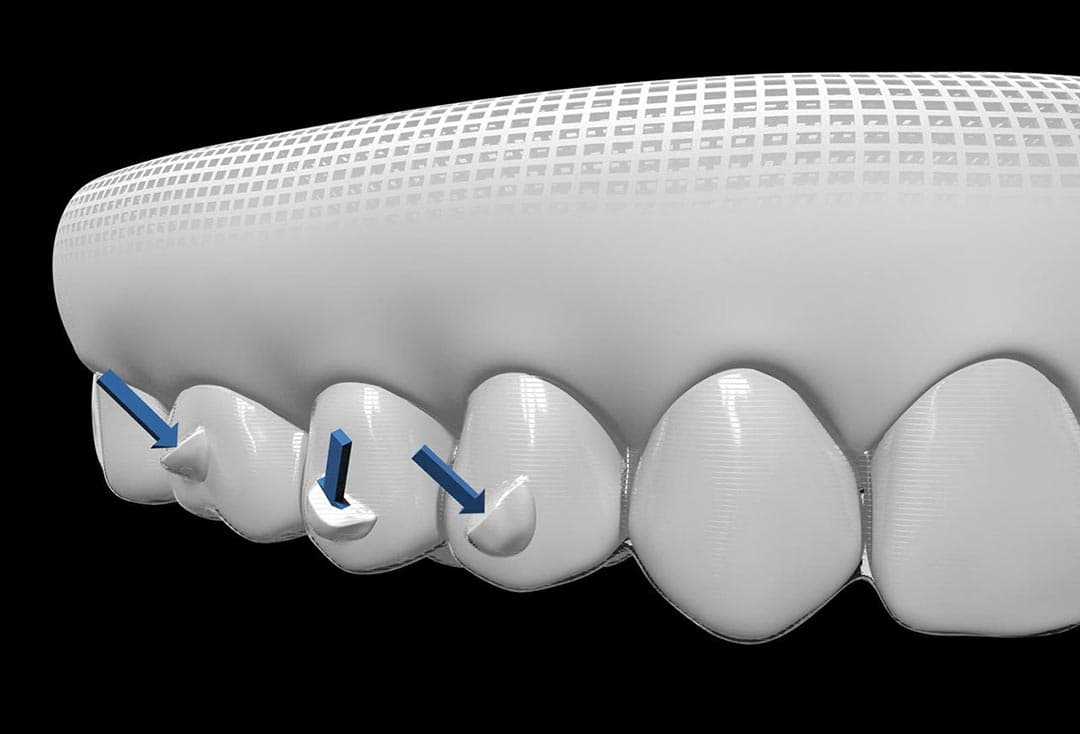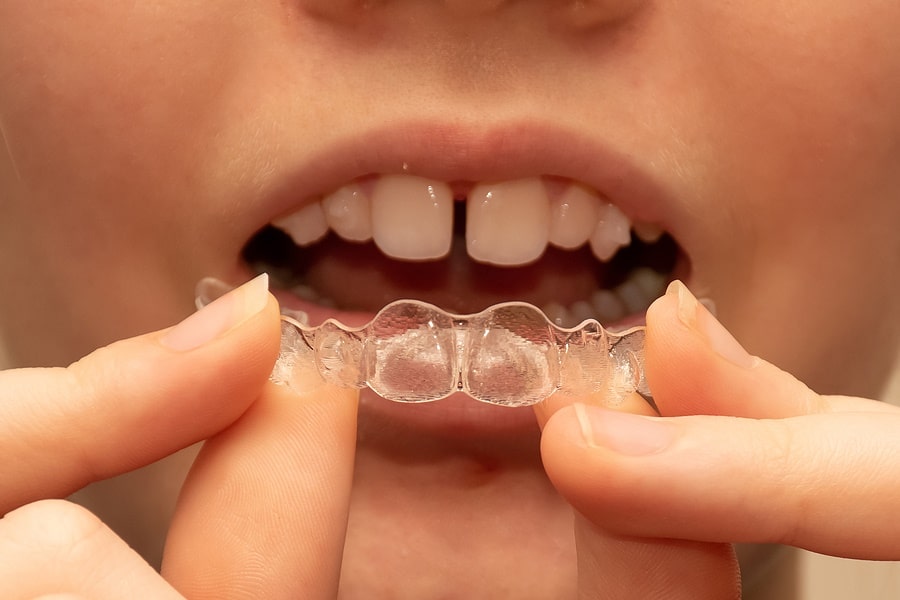Invisalign vs. Standard Braces: Which Choice Is Right for You?
When thinking about orthodontic therapy, the choice in between Invisalign and conventional dental braces presents a number of important elements that merit careful evaluation. Invisalign supplies a discreet choice with removable aligners, while traditional braces give a more visible yet effective option for extreme imbalance. Each alternative encompasses distinct benefits and disadvantages related to appearances, convenience, treatment duration, and price. Comprehending these nuances is essential for making a notified choice that straightens with your individual preferences and lifestyle. The question continues to be: which alternative will finest meet your orthodontic requirements and expectations?
Overview of Treatment Alternatives

In contrast, standard dental braces contain steel brackets and wires that are adhered to the teeth. This approach applies continual pressure gradually to attain positioning. While efficient for complicated orthodontic concerns, traditional dental braces need routine gos to for modifications and can present obstacles in keeping oral hygiene as a result of the difficulty of cleansing around cords and braces.
Both options have their values, and the option frequently depends upon certain oral problems, lifestyle preferences, and person compliance. Inevitably, speaking with an orthodontic specialist is critical for figuring out one of the most appropriate therapy strategy tailored to individual needs. Understanding the nuances of each option can considerably influence the overall success of orthodontic treatment.
Visual Factors To Consider
A considerable variable influencing the choice between Invisalign and traditional braces is the visual appeal each therapy uses. Invisalign aligners are crafted from clear plastic, making them essentially unnoticeable when worn.
On the other hand, standard braces consist of metal brackets and cords, which can be much more obvious. While advancements in orthodontic innovation have resulted in the development of smaller braces and tinted elastics, traditional braces still maintain a more conspicuous profile. For some people, the exposure of dental braces may prevent them from seeking necessary treatment.
Eventually, the choice between Invisalign and standard braces might pivot on individual choices concerning aesthetics. People that focus on discernment commonly favor Invisalign, while those that are less worried about presence may select traditional braces. Recognizing the aesthetic ramifications of each alternative is important for making a notified decision that straightens with one's lifestyle and preferences.
Convenience and Convenience

In regards to convenience, Invisalign aligners are removable, allowing people to enjoy their preferred foods without limitation and keep optimum oral health. Cleaning and flossing are streamlined, as the aligners can be obtained throughout these regimens, whereas standard braces call for cautious steering around braces and wires.
Furthermore, Invisalign's modern system permits fewer orthodontic brows through. Clients typically obtain numerous sets of aligners at the same time, which can enhance the treatment process and lower time spent in the orthodontist's chair. In contrast, conventional dental braces require normal changes, making them less convenient for those with active routines. Invisalign. In general, the convenience and ease of Invisalign make it an attractive option for lots of individuals looking for orthodontic treatment.
Treatment Period and Performance
While both Invisalign and conventional dental braces work in fixing dental misalignments, the period of therapy can differ significantly in between both options. Normally, Invisalign treatment can take anywhere from 12 to 18 months, relying Recommended Reading on the complexity of the case. The clear aligners work by gradually moving teeth right into their wanted placements, and routine follow-ups with an orthodontist aid guarantee progress stays on course.
In comparison, standard dental braces usually need a longer commitment, usually varying from 18 months to 3 years. This results from their set nature and using brackets and cables, which can be extra effective for severe misalignments and complicated instances (Invisalign). The treatment performance of traditional dental braces is well-documented, as they permit exact changes and greater control over tooth motion
Ultimately, the choice between Invisalign and conventional dental braces may pivot on both the anticipated treatment period and the particular oral issues available. Consulting with an orthodontist is important, as they can give tailored suggestions based upon private requirements, making sure the picked approach lines up with wanted end results and timeframes.
Cost Comparison and Insurance Coverage Alternatives
Expense plays a substantial role in the decision-making process for individuals considering orthodontic treatment, whether opting for Invisalign or traditional dental braces. On standard, the expense of Invisalign ranges from $3,000 to $8,000, while conventional braces typically cost in between $2,000 and $6,000. Variables affecting these costs include the complexity of the situation, the period of therapy, and geographical area.
Numerous oral insurance coverage plans give partial coverage for orthodontic treatments, yet the specifics can vary extensively. Generally, conventional braces might be extra frequently covered by insurance strategies contrasted to Invisalign, which some insurance firms classify as a cosmetic treatment.
Additionally, a number of orthodontic practices supply flexible settlement plans, making both treatment options extra available. Patients should ask about possible financing options and discount rates for in advance settlements. Reviewing the overall expense, including insurance policy advantages and layaway plan, is essential for making an educated decision that straightens with both aesthetic choices and budget plan factors to consider.

Final Thought
In recap, the choice between Invisalign and conventional braces rests on multiple factors, consisting of aesthetic choices, convenience, therapy period, and price. Invisalign uses a very discreet, removable alternative that facilitates dental hygiene and dietary versatility, while traditional dental braces may be preferable for intricate oral problems and typically come with a reduced rate point. Inevitably, examination with an orthodontist is find more important to evaluate private conditions and identify the most proper treatment choice for attaining ideal oral her response alignment.
When taking into consideration orthodontic treatment, the selection in between Invisalign and standard braces presents a number of vital elements that merit careful analysis.Comparing Invisalign and typical braces reveals distinctive therapy choices for orthodontic adjustment.While both Invisalign and conventional dental braces are efficient in correcting dental imbalances, the duration of therapy can vary considerably between the 2 options.Cost plays a considerable function in the decision-making process for people considering orthodontic treatment, whether opting for Invisalign or traditional dental braces.In summary, the option between Invisalign and traditional dental braces pivots on numerous aspects, consisting of aesthetic choices, comfort, treatment period, and cost.